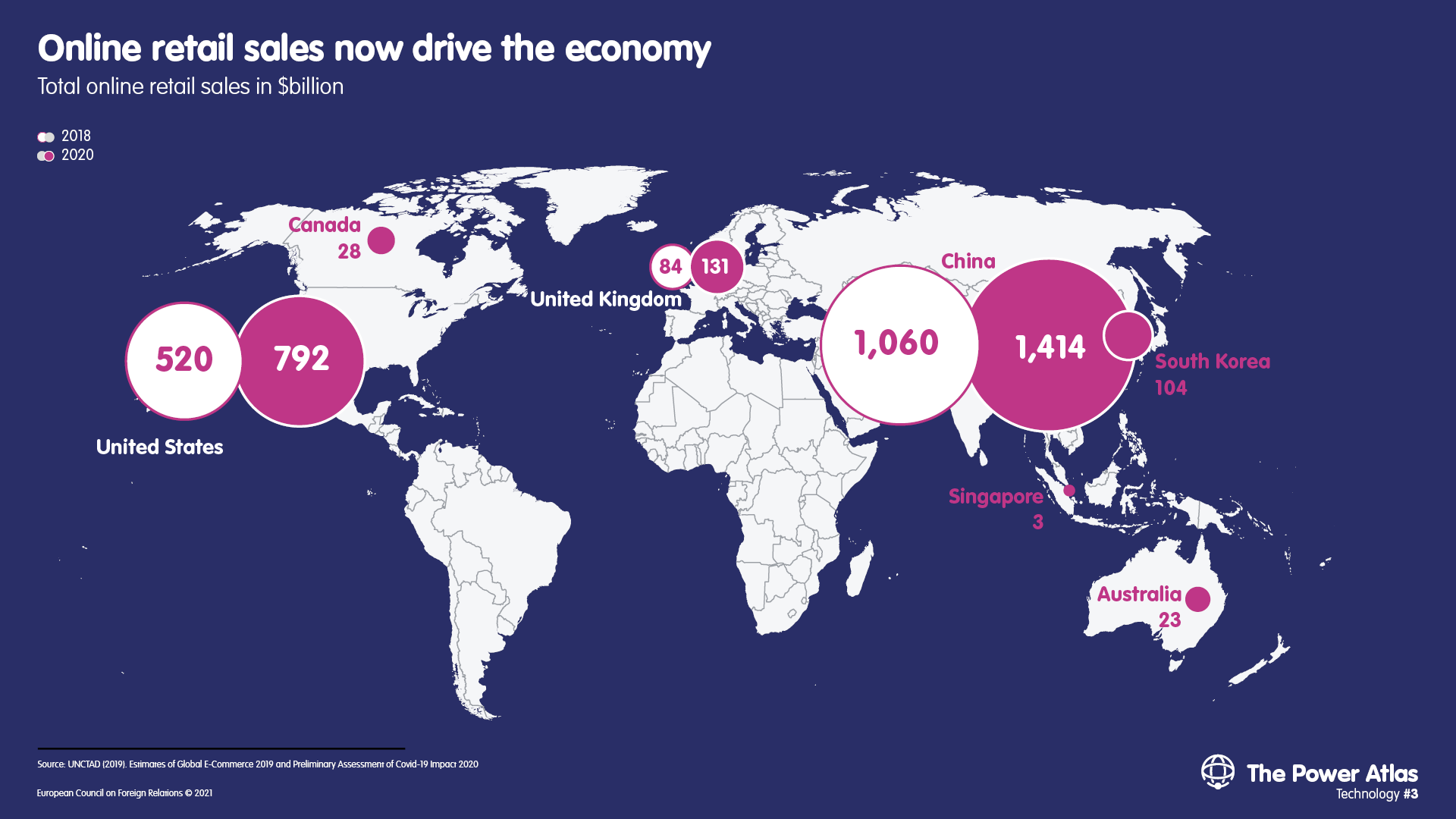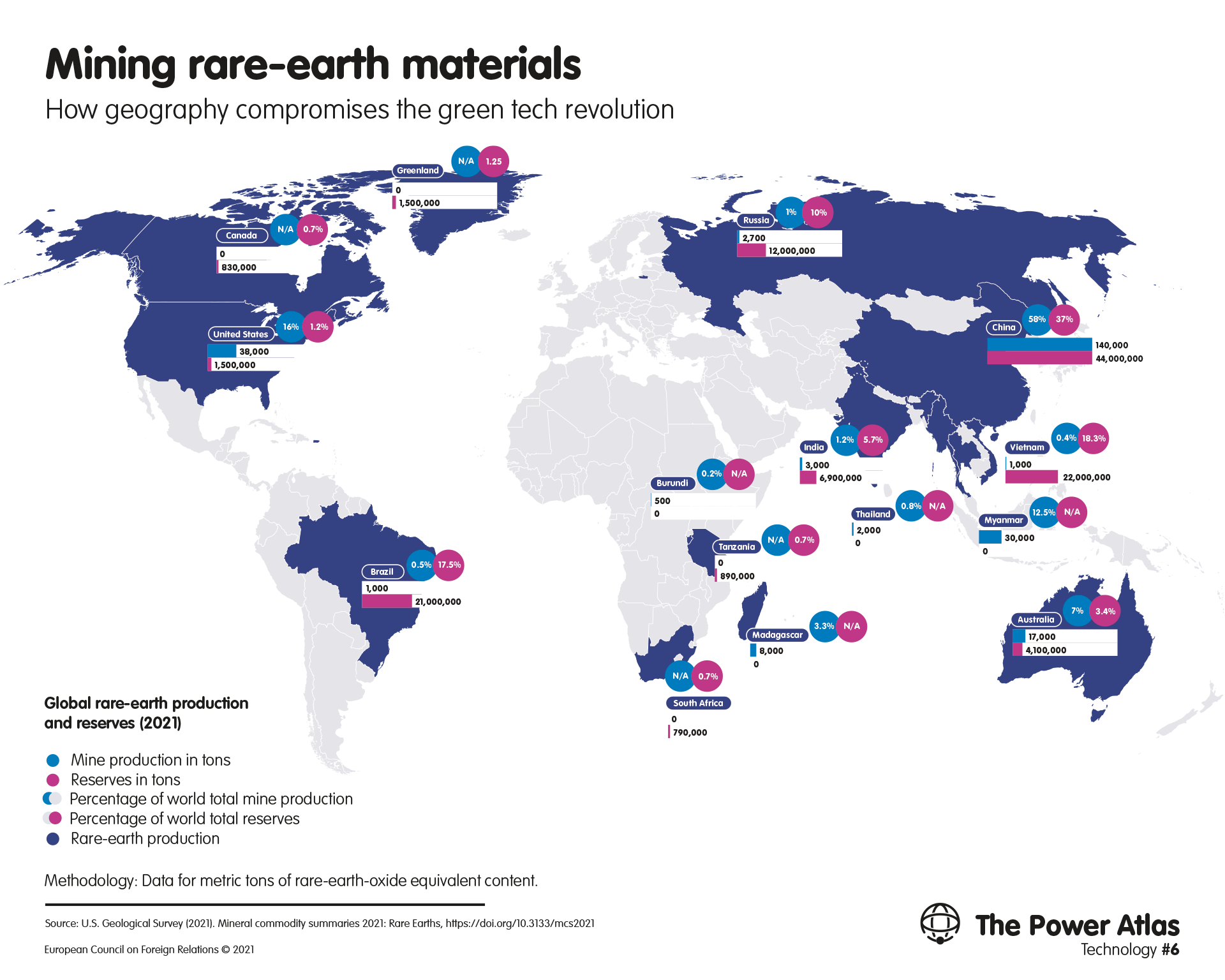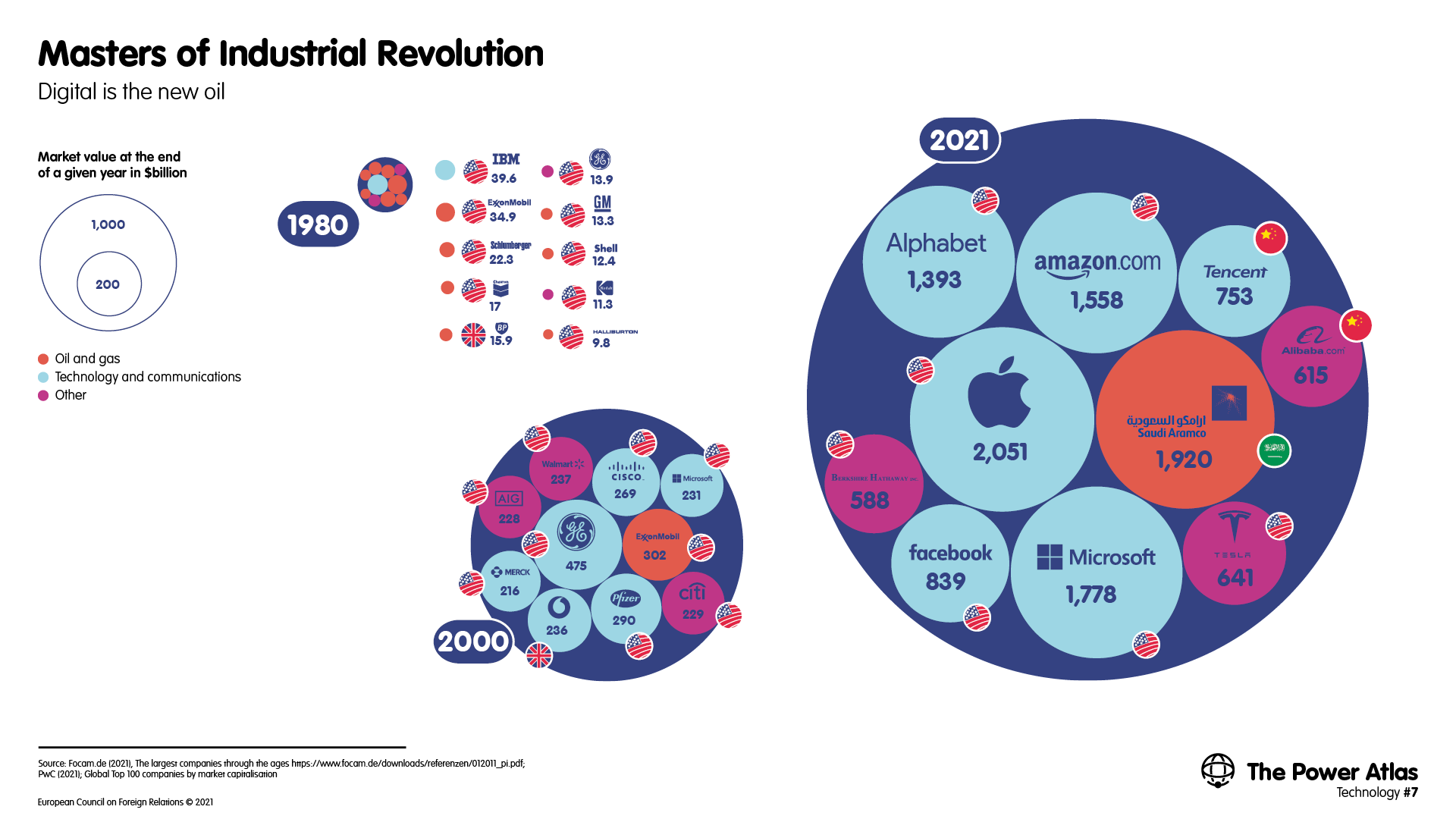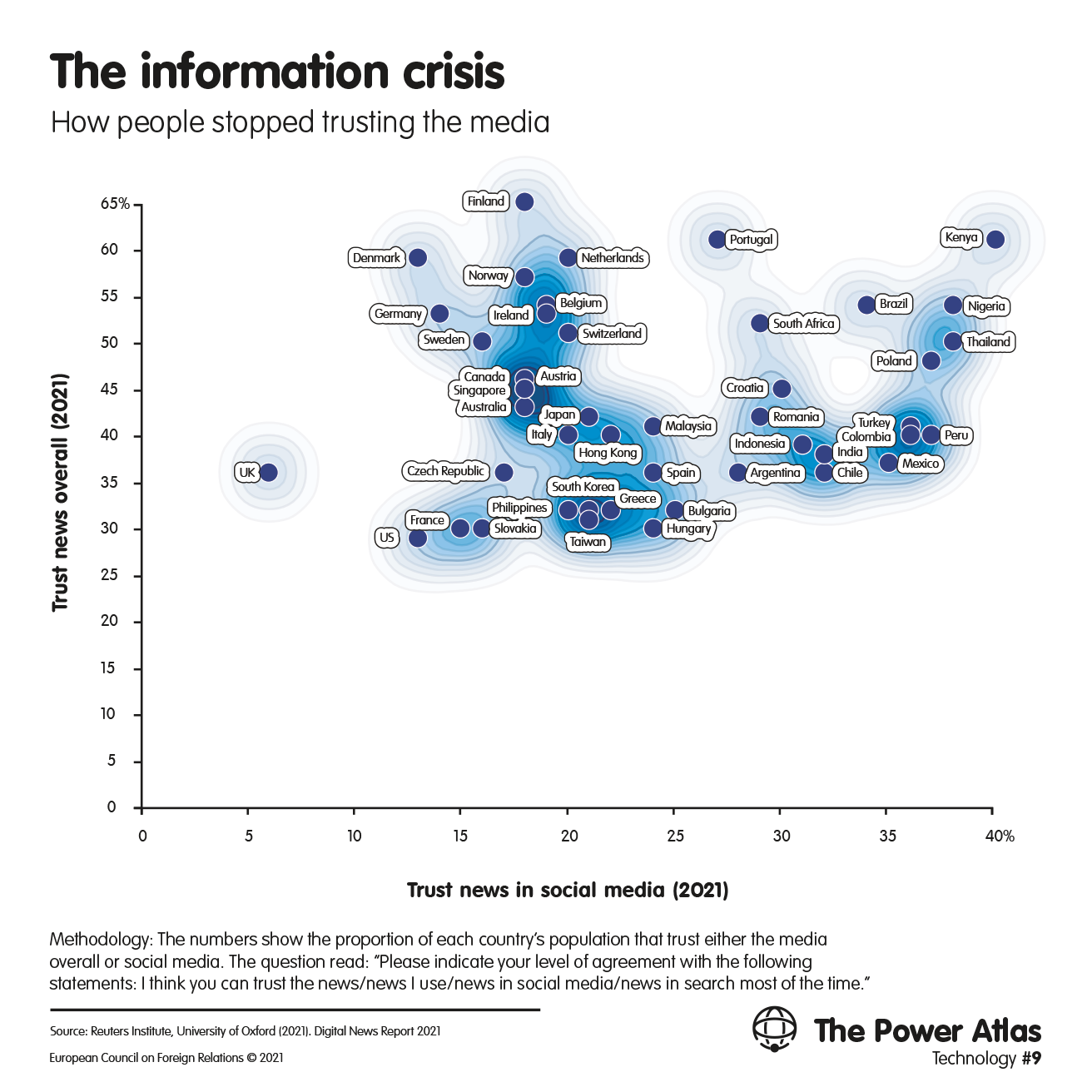
Technology
Great powers have realised that access to new technologies can be critical to their sovereignty. Yet, while the US and China fully embrace geo-tech diplomacy, the EU is only beginning to learn to speak the language of technological power

Great powers have realised that access to new technologies can be critical to their sovereignty. Yet, while the US and China fully embrace geo-tech diplomacy, the EU is only beginning to learn to speak the language of technological power
Technology shapes geopolitics – by bringing not only progress but also power to those who command and control it. Technological revolutions ranging from the development of irrigation to the first industrial revolution and electrification have unleashed deep economic, social, cultural, and political changes. All these innovations led to deep power asymmetries and inequalities before they were disseminated across the world. The digital revolution is no different. By 2019, around 4.1 billion people (57 per cent of the global population) were connected to the internet. However, as Map 1 shows, most of these users lived in developed countries, while large swathes of Africa and south Asia were still offline.
Map 1Download image
This technological revolution resembles previous ones in its profound local and global impact. By eroding political parties and traditional media, social media platforms have a profound impact on democracies’ political representation and communication structures, increasing polarisation and damaging trust in established political institutions. Meanwhile, digital technologies provide authoritarian regimes with new opportunities to monitor and control their citizens – and, at the same time, wage a hybrid war to influence and interfere in democratic states, aiming to constrain or alter their foreign policies.
Great powers have realised that access to new technologies can be critical to their sovereignty, prompting them to engage in a fierce competition to develop their technological capabilities. After massively embracing globalisation due to its positive economic impact, these powers now regard the interdependence associated with it as a dangerous vulnerability that they need to constrain and, eventually, reduce.
The weaponisation of tech and information interconnectedness has led to fierce disputes about critical digital infrastructure (such as 5G and submarine cables), raw materials (such as rare earths), and industries (such as AI or semiconductors), as well as the control of data flows and storage, and the definition of standards for new technologies. Countries are erecting digital borders to keep their data away from others, imposing export controls on critical technologies and scientific talent, and seeking to create spheres of technological influence with like-minded countries – all in the hope of increasing their technological power and promulgating their technological models.
There is also technological competition in the influence operations, disinformation campaigns, and cyber-attacks that states use to wage hybrid wars against one another. This has led many states to try to reduce their connectedness, and even to split the internet and their industrial technological base to reduce their interdependence. While the technological revolution will continue, it will be shaped by not only a market logic, economic actors, and multilateral institutions but also governments’ national security and geopolitical concerns.
Technological power depends above all on economic and technical superiority. As Map 2 shows, the geography of the digital economy centres on two countries: the United States and China. In 2019 companies headquartered in the US and China accounted for 90 per cent of the market capitalisation of the 70 largest digital platforms (68 per cent and 22 per cent respectively), 75 per cent of all patents related to blockchain technologies, 75 per cent of the cloud computing market, and 50 per cent of global spending on the internet of things. The size of digital markets and the trade balance of digital services provide an accurate picture of the market power on which geo-tech diplomacy is based. As Map 3 shows, the pandemic has boosted e-commerce sales. According to the United Nations Conference on Trade and Development, between 2018 and 2020, online retail sales jumped from $1,060 billion to $1,414 billion in China, from $520 billion to $792 billion in the US, and from $84 billion to $131 billion in the United Kingdom.
Map 2Download image
Map 3Download image

Market power in some contested fields – such as 5G, semiconductors, rare earths, quantum computing, and payments systems – is critical. So is control of data flows and digital services. Cross-border data flows grew by roughly 112 times from 2008 to 2020. In 2018 around 330 million people made online purchases from other countries, each involving the cross-border transmission of data, helping e-commerce hit $26.6 trillion in sales (30 per cent of the world’s GDP). Companies that gain a competitive advantage by aggregating, analysing, and exploiting data have seized top market positions across the globe. Data is a source of both economic power and, now, political power. It drives productivity but also enhances state capacity.
The ownership and control of data flows have become a primary domain of US-Chinese competition for economic and geopolitical superiority – as demonstrated by, for example, the two countries’ battle over 5G technology. Access to data and the capacity to deny others access to it have become key power variables. And a lack of global governance of data flows creates an acute risk of disputes over them. The geopolitical importance of data is reflected in increasingly commonplace concepts such as ‘data borders’, ‘electronic walls’, ‘high-risk vendors’, ‘decoupling’, and ‘data export controls’.
The five key areas in which China and the US are waging a technological cold war, and which define countries’ capacity to act, are: artificial intelligence (AI), cloud computing, semiconductors, 5G and mobile equipment, and quantum technology. In each of these areas, the next decade is likely to see China make significant breakthroughs that help it catch up with the US, while the European Union fails to keep pace. Therefore, the US has an interest in slowing down Chinese companies’ growth in these areas. However, China is lagging on semiconductors: while US factories only produce 7 per cent of the semiconductors, US companies (such as Intel, Qualcomm, Broadcom, or Texas Instruments) account for 55 per cent of the global market for this critical technological component, with Chinese and European firms at 5 per cent and 7 per cent respectively (South Korean and Taiwanese companies account for 21 per cent and 6 per cent respectively). As Map 4 shows, 63 per cent of the world semiconductors are produced in factories located in Taiwan and 18 per cent in South Korea, both key US allies, while only 6 per cent are produced in China. The fact that semiconductors are such a choke-point for China explains why the US is seeking to restrict exports of these critical goods to its Chinese rival and why Taiwan has become such a key technological battleground.
Map 4Download image
Connectivity is also a major battlefield. Like 5G, submarine cables and cloud services are important domains for tech sovereignty and rivalry. Amazon Web Services, Google Cloud, and Microsoft Azure dominate these markets, but Chinese firm Alibaba Cloud’s services are catching up. As Map 5 shows, most interregional bandwidth capacity is found between North America and Asia, and between North America and Europe. Europe is the largest internet bandwidth user (at 211 kbits/s, versus 130 kbits/s for the Americas and 102 kbits/s for the Asia-Pacific) but it lacks leading cloud service providers.
Map 5Download image

Another potential weakness for Europe is its access to the raw materials essential for technologies such as batteries, fuel cells, wind energy systems, photovoltaic cells, traction motors, robotics, drones, 3D printing, and information and communications systems. As Map 6 shows, China currently produces 58 per cent of all rare earths, and its reserves are an estimated 37 per cent of the global total. Meanwhile, US production of rare earths is 16 per cent of the global total, and its reserves are only 1.2 per cent. This is a major vulnerability for the EU in its quest for technological sovereignty, given that it currently produces less than 1 per cent of the lithium it needs for the batteries it uses, less than 1 per cent of the platinum for its fuel cells, 1 per cent of the raw materials for its wind energy systems, 1 per cent of silicon-based photovoltaic assemblies, and 2 per cent of the raw materials for its robotics.
Map 6Download image

At the turn of the twenty-first century, any list of the world’s ten most valuable firms included oil and gas producers, consumer goods businesses, and banks and insurance companies. Today, as Map 7 shows, technology companies dominate the list. The oil and banking companies on which the US built its global industrial supremacy in the twentieth century have given way to Alphabet (Google), Amazon, Facebook, and Apple. US tech companies dominate the global market, with Chinese firms in second place and European ones a distant third. The Mapping China’s Technology Giants project at the Australian Strategic Policy Institute’s International Cyber Policy Centre has identified and tracked the overseas expansion of 3,800 key Chinese technology companies, 27 of which it considers to be “tech giants”.
Map 7Download image

However, market capitalisation, on which the US leads, is not the whole story. In fact, it hides the fact that China is leading on AI, machine learning, and cyber-capabilities – as the US military recently recognised. China is now the world’s largest investor in technology: in 2020 its research and development investment hit a record $378 billion, equivalent to 2.4 per cent of its GDP. This massive investment puts China on track to becoming the world leader in machine learning, the technology with the greatest potential to cause significant economic and military disruption.
In the future, geopolitics will be dominated by countries and firms that excel in artificial intelligence, robotics, the internet of things, autonomous vehicles, 3D printing, nanotechnology, biotechnology, materials science, energy storage, and quantum computing. Here, the US has many critical advantages: despite lagging on 5G and AI, it has the market size, the innovation drive, and the financial resources to challenge China’s leadership in these fields. Meanwhile, China has a well-funded industrial strategy designed to achieve technological sovereignty, and can draw on the power of its huge market. The EU lags on both fronts: it does not have either a market as dynamic as the US one or an industrial strategy that can compensate for this. As a consequence, the bloc is off the pace in areas such as AI, patents, innovation, and ‘unicorn companies’ (privately held start-ups valued at $1 billion or more). Still, Europe has enough assets – such as EU leadership on 5G and other areas – to be a technological player. The battle is not yet lost.
US companies are dominant in the social networking, information, advertisement, and communications markets. Facebook and Twitter are globally established, while their Chinese and Russian counterparts (WeChat and VKontakte respectively) are only dominant in their local markets. Revealingly, there are no such companies in the EU – which makes it completely dependent on the services provided by US platforms.
In liberal democracies, where freedom of speech is a key value, the open and unregulated nature of US social networking platforms creates vulnerabilities to foreign influence and interference. One can see this in Freedom House’s Election Watch project, which maps the countries in which social media has been used to compromise the integrity of elections. A recent report by Facebook found that, between 2017 and 2020, there were 130 coordinated inauthentic behaviour events designed to seed disinformation in various countries. As Map 8 shows, the report placed Russia and Iran at the top of the list of actors responsible for these operations, and revealed that the US and Ukraine were the main targets.
Map 8Download image
As a result, the economic gains brought about by the technological revolution coexist with very low levels of public trust in technology, especially when it comes to privacy, data safety, and cyber-crime. As Map 9 shows, concerns about data privacy and disinformation have led citizens worldwide to show very low trust in social media networks. In the 27 countries regularly surveyed by the Edelman Trust Barometer, the social media industry was the least trusted of a sample of 16 key economic sectors (from healthcare to energy, education, and retail) while almost two-thirds of respondents saw traditional media organisations as biased and as doing their job poorly, reflecting record lows in trust in information sources.
Map 9Download image

In contrast to often-vulnerable democracies, authoritarian states can restrict particular individuals’ and organisations’ access to the internet in the territory they control. China, Iran, and North Korea have almost complete control of the internet, while Myanmar and Cambodia are trying to gain something similar. Authoritarian states such as Russia and Saudi Arabia can use advanced digital technologies, such as facial recognition and AI, to engage in mass surveillance and repression. As Freedom on the Net reports, countries such as China, North Korea, and Iran block Twitter, Facebook, and YouTube, and largely monitor all their citizens’ internet traffic.
As great powers seek to enhance their technological strength, they have once again started thinking in terms of spheres of influence. In a contest resembling the nineteenth century ‘Great Game’ between Britain and the Russian Empire for influence over central Asia, they now seek to lure countries into their technological ecosystems. As Map 10 shows, China has exported surveillance technology to more than 60 countries with dismal human rights records, including Iran, Myanmar, Venezuela, and Zimbabwe. Thirty-six of those states have signed on to China’s Belt and Road Initiative, which gives them access to cheap loans to buy ‘authoritarian tech’ from Chinese companies, particularly Huawei, Hikvision, Dahua, and ZTE. And, in other critical technologies, the fear is that China will use systems such as its Blockchain-Based Service Network to try to rewire the world and create a parallel internet subject to Chinese standards.
Map 10Download image
Liberal democracies also seek to establish digital and other tech alliances. Through the Clean Network Initiative it set up in 2017, the Trump administration sought to incentivise its friends and allies to ban or limit Chinese technology companies such as Huawei, and to adopt so-called “clean” carriers, data stores, apps, clouds, and cables. The group – which includes EU member states, as well as Australia, Canada, India, Israel, Japan, New Zealand, Singapore, Taiwan, and the UK – seeks to offset Chinese technological power in a manner similar to the cold war strategy of containment. In the EU, Latin America, and several other places, countries have begun to slowly move away from Chinese technology and Chinese companies after designating them as ‘risky vendors’.
In an environment characterised by tech fragmentation, the ‘splinternet’, and geopolitical competition for spheres of influence, traditional global governance institutions such as the United Nations and the World Trade Organization cannot sustain a rules-based order that guarantees equal access to critical technologies. While great powers compete to gain control over regulatory bodies such as the International Telecommunications Union and the World Intellectual Property Organization, global governance is also breaking up around smaller institutions, such as the D-10 initiative – which the US set up in 2014 to push advanced democracies to coordinate on tech vis-à-vis authoritarian governments – and the G7 Global Partnership on Artificial Intelligence, which excludes Russia and China. A new brand of tech diplomacy has emerged, involving a mixture of incentives and disincentives for countries to join great powers’ technological blocs and spheres of influence.
Achieving power and resilience on this new landscape requires a combination of defensive and proactive measures, both at home and globally. Defensive measures range from diversifying suppliers and markets to limiting or securing third countries’ access to home markets, controlling technological exports, keeping and attracting talent, and combating foreign influence and disinformation operations. As Map 11 shows, China stands out as the leader in digital trade restrictions and the quest for ‘digital independence’. By 2018, China was the world leader in data and technology nationalisation, seeking to develop technological standards and capacities that were different from global ones.
Map 11Download image
Proactive measures include the creation of deep and comprehensive industrial strategies that involve both state and market actors, and that allow countries to keep or gain a competitive edge in critical technologies. They also include the formation of international coalitions of like-minded countries and multilateral institutions that ensure fair access to technology and provide public goods such as global tech governance.
While the US and China have fully embraced geo-tech diplomacy, the EU is only beginning to learn to speak the language of technological power – to paraphrase its high representative for foreign and security affairs, Josep Borrell. The bloc needs to not only expand and secure its industrial technological base at home but also work to enhance its influence by cooperating with the US and many countries in the Indo-Pacific, Africa, and Latin America. The EU is not doomed to lose this game: like many other foreign services, Borrell’s office has appointed its own tech ambassador and engaged in geo-tech diplomacy. The recent completion of the BELLA submarine cable linking Europe and Latin America, and the recent EU-Japan Connectivity Agreement to rival China’s Belt and Road Initiative, are signs of progress. The EU seems to increasingly recognise that only those who see technology through a geopolitical lens will be able to preserve their sovereignty.
Economics
Climate